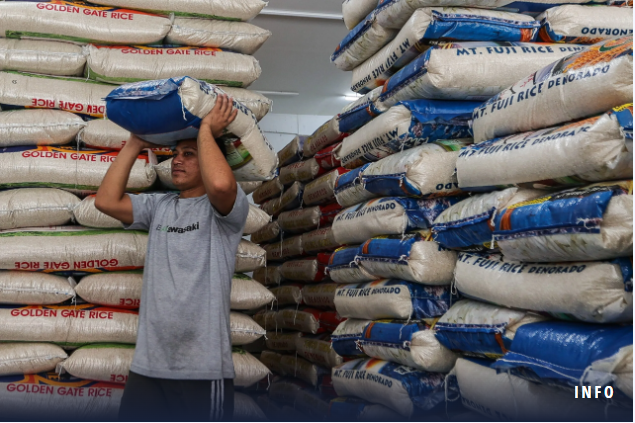Tags
NEDA official admits tariff cut did not drive down rice prices.
Iya Gozum

The Philippines continues to grapple with high rice prices despite lower global prices, landed costs, and the tariff reduction the government implemented last July. Is there a rice cartel?
MANILA, Philippines – Lower tariffs, among other factors, have not translated to lower rice prices, a National Economic and Development Authority (NEDA) official said on Tuesday, December 10.
“Hindi po nag-translate ‘yung lower tariff at bigger supply ng bigas at ‘yung lower price sa international market,” NEDA Director Nieva Natural said during the House quinta committee conducting a probe into smuggling and price manipulation of basic goods.
(Lower tariffs, bigger supply of rice, and lower prices in the international market did not translate to lower retail prices.)
This comes almost five months after the Philippine government cut tariffs on imported rice from 35% to 15% in an attempt to decrease prices.
Globally, rice prices have decreased following the lifting of India’s export ban in September, Natural said.
With lower global prices, landed cost decreased. As NEDA’s presentation showed during the hearing, imported rice from Vietnam declined from P41.32 to P33.95.
Meanwhile, rice from Thailand also decreased from P41.08 to P33.96. These figures show an average P7 difference between prices from June to October.
“What we want to hear [is] what’s happening? Bumaba ‘yung landed cost, bumaba ‘yung farmgate. Pero bakit mataas ang bigas ho natin?” ACT-CIS Representative Erwin Tulfo asked.
(What we want to hear is what’s happening? Landed cost decreased. Farmgate decreased. But why is the price of rice still high?)
“It is a puzzle too for us and perhaps this deserves a more nuanced analysis,” said Natural in a mix of Filipino and English.
“Because in a highly competitive market, you would expect a decrease in tariff rates would result in increased quantity of imports. And the increase in quantity in rice supply in the market should translate to lower retail. But that’s not what happened.”
As of December 6, the price of well-milled imported rice ranged from P40 to P54, while imported premium rice ranged from P52 to P60.
No cartel?
If markets were “sufficiently competitive,” Natural said reduction of tariffs should have translated to lower retail and farmgate prices.
But prices of rice now are “more consistent with what would be observed in a non-competitive market structure,” according to NEDA.
Is there a rice cartel?
Based on the past two hearings of the House quinta committee, this has not been supported by hard evidence. But perhaps, there is an environment that encourages such behavior, said DA Undersecretary Christopher Morales.
One importer denied the existence of a rice cartel. Jeannie Tan of Bly Agri Venture Trading said on Tuesday that sales have slowed down recently.
“Kagaya ngayon matumal ‘yung benta. Kahit ibebenta namin nang lugi, walang bumibili sa ngayon. Kaya ‘yung sinasabi na cartel, sa ngayon walang cartel. ‘Yung sa opinyon ko lang. Walang cartel, walang hoarding,” Tan said.
(Like now, sales slowed down. Even if we sell at lower prices, no one’s buying. So, what they’re saying about the cartel, as of now there’s no cartel. That’s only my opinion. There’s no cartel, no hoarding.)
Tan, along other rice importers, appeared before the House quinta committee.
During the first hearing of the quinta committee in November, lawmakers sought to establish that importers may have been taking advantage of the tariff reduction meant to make rice cheaper for the Filipino public. – Rappler.com
https://www.rappler.com/philippines/neda-official-admits-tariff-cut-did-not-drive-down-rice-prices/Published Date: December 11, 2024






